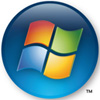 Some of our visitors searched the site for
Some of our visitors searched the site for 
General keyboard shortcuts
- F1 - Display Help
- CTRL+C - Copy the selected item
- CTRL+X - Cut the selected item
- CTRL+V - Paste the selected item
- CTRL+Z - Undo an action
- CTRL+Y - Redo an action
- DELETE - Delete the selected item and move it to the Recycle Bin
- SHIFT+DELETE - Delete the selected item without moving it to the Recycle Bin first
- F2 - Rename the selected item
- CTRL+RIGHT ARROW - Move the cursor to the beginning of the next word
- CTRL+LEFT ARROW - Move the cursor to the beginning of the previous word
- CTRL+DOWN ARROW - Move the cursor to the beginning of the next paragraph
- CTRL+UP ARROW - Move the cursor to the beginning of the previous paragraph
- CTRL+SHIFT with an arrow key - Select a block of text
- SHIFT with any arrow key - Select more than one item in a window or on the desktop, or select text within a document
- CTRL with any arrow key+SPACEBAR - Select multiple individual items in a window or on the desktop
- CTRL+A - Select all items in a document or window
- F3- Search for a file or folder
- ALT+ENTER - Display properties for the selected item
- ALT+F4 - Close the active item, or exit the active program
- ALT+SPACEBAR - Open the shortcut menu for the active window
- CTRL+F4 - Close the active document (in programs that allow you to have multiple documents open simultaneously)
- ALT+TAB - Switch between open items
- CTRL+ALT+TAB - Use the arrow keys to switch between open items
- CTRL+Mouse scroll wheel - Change the size of icons on the desktop
- Windows logo key + TAB - Cycle through programs on the taskbar by using Windows Flip 3-D
- CTRL+Windows logo key + TAB - Use the arrow keys to cycle through programs on the taskbar by using Windows Flip 3-D
- ALT+ESC - Cycle through items in the order in which they were opened
- F6 - Cycle through screen elements in a window or on the desktop
- F4 - Display the Address bar list in Windows Explorer
- SHIFT+F10 - Display the shortcut menu for the selected item
- CTRL+ESC - Open the Start menu
- F10 - Activate the menu bar in the active program
- RIGHT ARROW - Open the next menu to the right, or open a submenu
- LEFT ARROW - Open the next menu to the left, or close a submenu
- F5 - Refresh the active window
- ALT+UP ARROW - View the folder one level up in Windows Explorer
- ESC - Cancel the current task
- CTRL+SHIFT+ESC - Open Task Manager
- SHIFT when you insert a CD - Prevent the CD from automatically playing
Dialog box keyboard shortcuts
- CTRL+TAB - Move forward through tabs
- CTRL+SHIFT+TAB - Move back through tabs
- TAB - Move forward through options
- SHIFT+TAB - Move back through options
- ALT+underlined letter - Perform the command (or select the option) that goes with that letter
- ENTER - Replaces clicking the mouse for many selected commands
- SPACEBAR - Select or clear the check box if the active option is a check box
- Arrow keys - Select a button if the active option is a group of option buttons
- F1 - Display Help
- F4 - Display the items in the active list
- BACKSPACE - Open a folder one level up if a folder is selected in the Save As or Open dialog box
Windows Sidebar keyboard shortcuts
- Windows logo key Picture of Windows logo key + SPACEBAR - Bring all gadgets to the front and select Sidebar
- Windows logo key Picture of Windows logo key +G - Cycle through Sidebar gadgets
- TAB - Cycle through Sidebar controls
Windows Explorer keyboard shortcuts
- CTRL+N - Open a new window
- END - Display the bottom of the active window
- HOME - Display the top of the active window
- F11 - Maximize or minimize the active window
- LEFT ARROW - Collapse the current selection (if it is expanded), or select the parent folder
- ALT+LEFT ARROW - View the previous folder
- RIGHT ARROW - Display the current selection (if it is collapsed), or select the first subfolder
- ALT+RIGHT ARROW - View the next folder
- CTRL+Mouse scroll wheel - Change the size and appearance of file and folder icons
- ALT+D - Select the Address bar
- ALT+C - Display the Table of Contents
- ALT+N - Display the Connection Settings menu
- F10 - Display the Options menu
- ALT+LEFT ARROW - Move back to the previously viewed topic
- ALT+RIGHT ARROW - Move forward to the next (previously viewed) topic
- ALT+A - Display the customer support page
- ALT+HOME - Display the Help and Support home page
- HOME - Move the to beginning of a topic
- END - Move to the end of a topic
- CTRL+F - Search the current topic
- CTRL+P - Print a topic
- F3- Move to the Search box
Windows Help viewer keyboard shortcuts









0 comments:
Post a Comment